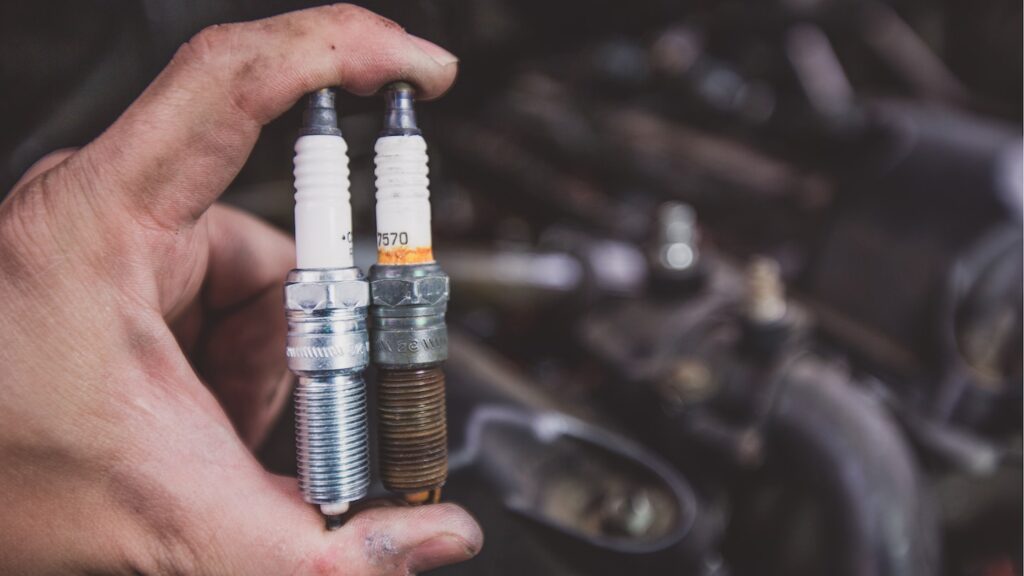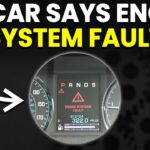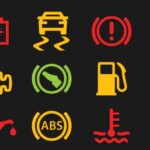
Nissan Xterra No Power When Accelerating — Complete Diagnostic and Fix Guide

Experiencing a loss of power when accelerating your Nissan Xterra is one of the most common and frustrating issues owners face. Whether your SUV hesitates, jerks, or simply feels sluggish under throttle, this guide provides a comprehensive breakdown of causes, diagnostics, and proven solutions to restore full performance.
- 1. Understanding Power Loss During Acceleration
- 2. Common Symptoms of Power Loss
- 3. Main Causes of No Power When Accelerating
- 4. Step-by-Step Diagnostic Approach
- 5. Key Sensors Affecting Acceleration
- 6. Potential Repairs and Solutions
- 7. Preventive Maintenance to Avoid Power Loss
- 8. Expert Insight
- Final Thoughts
1. Understanding Power Loss During Acceleration
When your Nissan Xterra fails to accelerate smoothly, the issue often stems from an imbalance in one or more of the vehicle’s essential systems — fuel delivery, air intake, ignition, exhaust, or transmission. Modern Xterras rely heavily on sensors and the ECU (Engine Control Unit), meaning even a small component malfunction can disrupt power output.
2. Common Symptoms of Power Loss
Before diagnosing, it helps to identify how your Xterra behaves when the problem occurs:
- Sluggish or delayed throttle response
- Engine hesitation or jerking during acceleration
- Check Engine Light (CEL) illuminated
- Reduced top speed or acceleration uphill
- Unusual noises or exhaust smells
- RPM increases without vehicle speed gain (automatic models)
3. Main Causes of No Power When Accelerating
Let’s explore the most frequent culprits behind Nissan Xterra acceleration problems.
3.1 Fuel System Problems
A restricted fuel flow prevents the engine from getting the fuel it needs for combustion.
- Clogged fuel filter: Limits fuel delivery.
- Failing fuel pump: Causes low pressure and engine starvation.
- Dirty or failing injectors: Affect spray pattern and fuel atomization.
Solution:
Test fuel pressure, replace the fuel filter, and clean or replace injectors.
3.2 Air Intake System Restrictions
Proper airflow is essential for power generation. Any obstruction or sensor error can reduce performance.
You may be interested in reading Nissan Xterra Won’t Start and Makes a Clicking Noise: Full Troubleshooting Guide
Nissan Xterra Won’t Start and Makes a Clicking Noise: Full Troubleshooting Guide- Dirty air filter blocks intake flow.
- Faulty Mass Air Flow (MAF) sensor sends incorrect readings.
- Dirty throttle body disrupts airflow at idle or low RPMs.
Solution:
Replace the air filter every 15,000–30,000 miles, clean the throttle body, and use MAF cleaner to restore sensor accuracy.
3.3 Ignition System Malfunctions
The ignition system must deliver a strong spark to ignite the air-fuel mixture.
- Worn spark plugs cause misfires and weak combustion.
- Faulty ignition coils lead to incomplete burning.
- Bad wiring can interrupt voltage supply.
Solution:
Replace spark plugs every 30,000–60,000 miles, inspect coil packs, and ensure solid electrical connections.
3.4 Exhaust System Blockage
A clogged or damaged exhaust restricts the engine’s ability to expel gases efficiently.
- Clogged catalytic converter increases backpressure.
- Broken exhaust components reduce airflow efficiency.
Solution:
Check for rattling noises and high backpressure; replace the catalytic converter if necessary.
3.5 Transmission or Drivetrain Issues
If the engine runs fine but the vehicle doesn’t respond to acceleration, the issue might be in the transmission.
- Slipping clutch (manual Xterra) or torque converter failure (automatic).
- Low transmission fluid or worn internal components.
Solution:
Check fluid condition, perform a stall test, and inspect for transmission error codes.
 Nissan Xterra Won’t Start and Makes a Clicking Noise: Full Troubleshooting Guide
Nissan Xterra Won’t Start and Makes a Clicking Noise: Full Troubleshooting Guide Nissan Qashqai “Warning System Fault” — Complete Diagnosis & Fix Guide
Nissan Qashqai “Warning System Fault” — Complete Diagnosis & Fix Guide3.6 Faulty Sensors or ECU Issues
The Engine Control Unit (ECU) relies on multiple sensors to manage fuel and timing. A single bad reading can cause major drivability issues.
- Throttle Position Sensor (TPS): Sends incorrect throttle data.
- Oxygen Sensors (O2): Disrupts air-fuel mixture calibration.
- Crankshaft or Camshaft Sensors: Affect ignition timing.
Solution:
Scan with an OBD-II tool to identify faulty sensors and replace as necessary.
3.7 Vacuum Leaks
Air leaks in the intake system cause the engine to run lean, reducing power.
- Cracked vacuum hoses or leaking intake manifold gaskets are common causes.
Solution:
Use a smoke test or carburetor cleaner to locate leaks and replace the affected hoses or gaskets.
4. Step-by-Step Diagnostic Approach
| Step | Tool/Method | What It Checks | Possible Findings |
|---|---|---|---|
| 1. Visual Inspection | Manual | Air filter, spark plugs, hoses | Dirt, wear, or damage |
| 2. OBD-II Scan | Diagnostic tool | ECU error codes | Sensor or fuel system faults |
| 3. Fuel Pressure Test | Pressure gauge | Pump and filter performance | Low or unstable pressure |
| 4. MAF Sensor Test | Multimeter or live data | Air intake signal accuracy | Faulty readings |
| 5. Exhaust Backpressure Test | Gauge or thermometer | Catalytic converter flow | Excessive restriction |
| 6. Compression Test | Compression gauge | Cylinder health | Low compression in one or more cylinders |
5. Key Sensors Affecting Acceleration
| Sensor | Function | Symptoms When Faulty | Test Method |
|---|---|---|---|
| Throttle Position Sensor (TPS) | Measures throttle angle | Hesitation, poor throttle response | Check voltage sweep |
| Mass Air Flow Sensor (MAF) | Measures intake air | Stalling, poor idle, low power | Inspect and clean |
| Oxygen Sensor | Monitors exhaust gases | Rich/lean codes, poor fuel economy | Scan live data |
| Crankshaft Sensor | Controls spark timing | Stalling, no-start, loss of power | Resistance or waveform test |
| MAP Sensor | Measures air pressure | Hesitation, black smoke, poor acceleration | Voltage and vacuum test |
6. Potential Repairs and Solutions
| Issue | Recommended Fix |
|---|---|
| Clogged fuel filter or pump | Replace filter and test pump pressure |
| Dirty injectors | Use professional injector cleaning or replacement |
| Faulty MAF sensor | Clean or replace |
| Worn spark plugs or coils | Replace with OEM components |
| Clogged catalytic converter | Replace converter |
| Faulty TPS or O2 sensors | Replace and reset ECU |
| Vacuum leaks | Replace cracked hoses or gaskets |
| Transmission slip | Check fluid, service clutch or torque converter |
7. Preventive Maintenance to Avoid Power Loss
- Replace air and fuel filters regularly.
- Use high-quality gasoline and add fuel system cleaner every 6 months.
- Perform routine throttle body and MAF cleaning.
- Inspect and replace spark plugs and ignition coils at scheduled intervals.
- Monitor for Check Engine Light codes and address promptly.
- Service transmission fluid every 30,000–60,000 miles.
- Keep vacuum lines and sensors inspected during oil changes.
8. Expert Insight
“Nine out of ten Xterras that lose power during acceleration have a restriction or signal issue — fuel starvation, clogged converter, or a bad MAF. Regular maintenance and proper diagnostics save owners thousands in unnecessary repairs.”
— James Holloway, ASE Certified Diagnostic Technician
Final Thoughts
A Nissan Xterra losing power when accelerating can result from multiple overlapping issues. The key lies in methodical diagnosis, starting from basic checks (filters, sensors, spark plugs) and advancing to system-level tests (fuel pressure, compression, backpressure).
By combining preventive maintenance with early detection, you can keep your Xterra performing at peak efficiency for years to come — without the costly guesswork of trial-and-error repairs.
You may be interested in reading Nissan Xterra Won’t Start and Makes a Clicking Noise: Full Troubleshooting Guide
Nissan Xterra Won’t Start and Makes a Clicking Noise: Full Troubleshooting Guide Nissan Qashqai “Warning System Fault” — Complete Diagnosis & Fix Guide
Nissan Qashqai “Warning System Fault” — Complete Diagnosis & Fix Guide Nissan Qashqai Red Engine Light: Causes, Meanings, and Solutions
Nissan Qashqai Red Engine Light: Causes, Meanings, and SolutionsIf you want to know other articles similar to Nissan Xterra No Power When Accelerating — Complete Diagnostic and Fix Guide you can visit the category Common Problems.
Deja una respuesta






More content of your interest